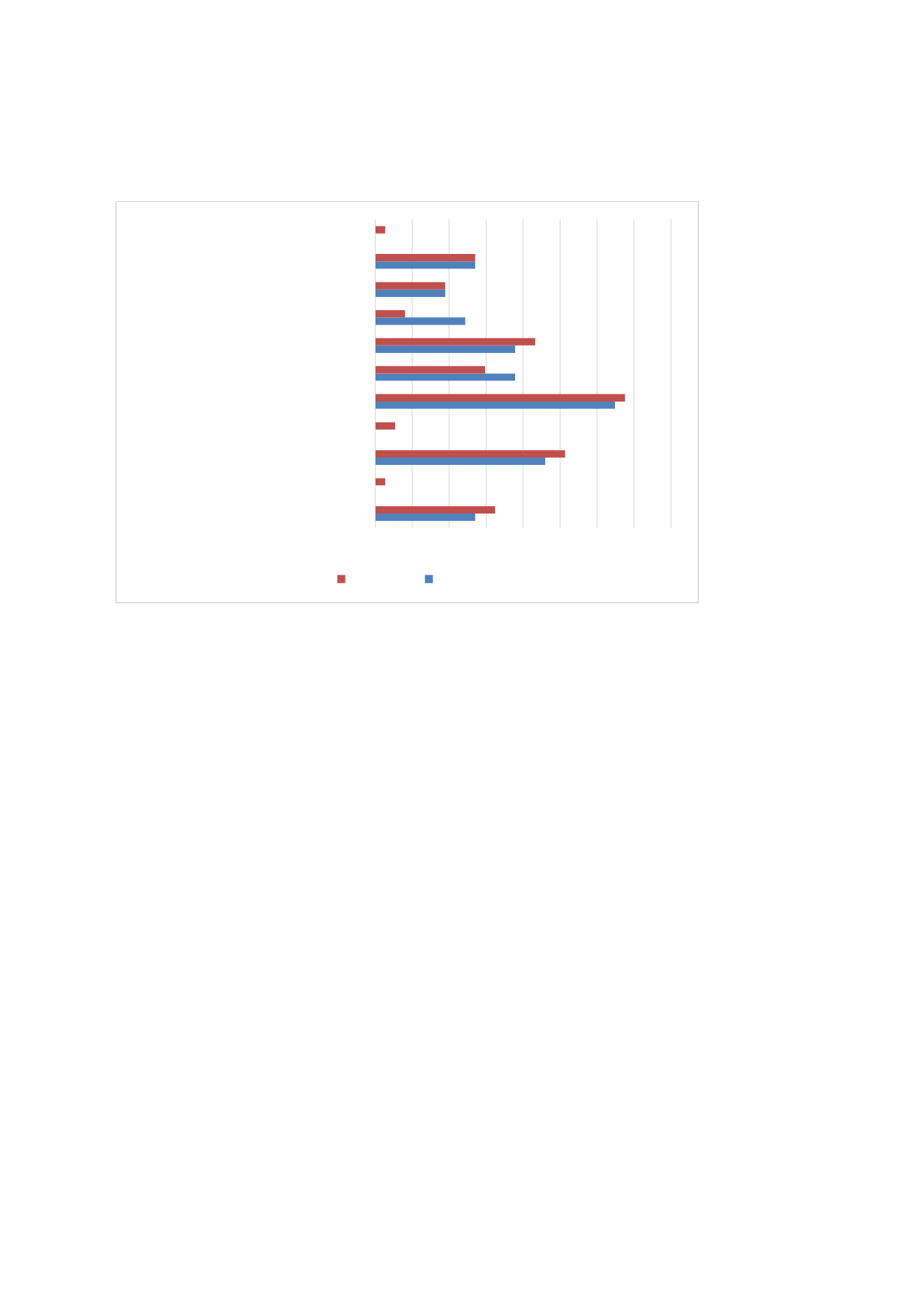

185
Figure 3.4.13: Main Barriers To Quality Education At The Primary And Secodnary Level
Source:
Authors’ calculation based on stakeholders survey data.
Given these responses, stakehodlers were asked to identify three factors that they considred as
most important for improving education quality in Nigeria. The most common response was
greater provision for teacher development programs and ICT facilities. This is consistent with
the fact that resource-gap was also identified as the most important barriers by the
stakeholders. The third most common answer was greater involvement of parents. 30%
respondents emphasized on student-specific issues such as improving communication skills and
promoting student-centred learning
Although madrasahs or Islamic school is common in northern Nigeria, stakeholders did not
consider higher provision of madrasahs as critical for improving education quality; less than 5%
stakehodlers considered madarasas as important. If anything, there was apparently a greater
support for the provision of affordable private schools (10% of the respondents considered this
as important for improving education quality) or after school hours private tuition. Oyewusi &
Orolade (2014) highlight prevalence of private tutoring in Nigeria and how controvasial they
have become in relation to cost, corruption and outcome. But the overall concesus is that
improving education quality in Nigeria is not just a matter of better acecss to a specific type of
school – Islamic or private non-religious. Demand for decentralization also did not feature
prominently in stakeholder responses – around 10% stakeholders identified this as important.
As noted in sections 2.1 and 4.2, Nigeria’s education system is very much decentralized in terms
of governance, management and operation.
Since the lack of funding and facilities were described as common barriers to quality education
at the primary and secodnary level, the stakeholders were asked about the state of funding of
government schools in Nigeria. The majority of the respondents perceived government schools
to be inadequately funded, both at primary and secondary level. In order to ascertain in what
0 0,1 0,2 0,3 0,4 0,5 0,6 0,7 0,8
Lack of effective school leadership
Lack of school autonomy
Lack of funds
Pressure of external evaluation
Lack of facilities
Lack of teacher motivation
Lack of good teachers
Language of instruction
Inappropriate curriculum/book content
Lack of parental involvement
Other
Secondary Primary
















